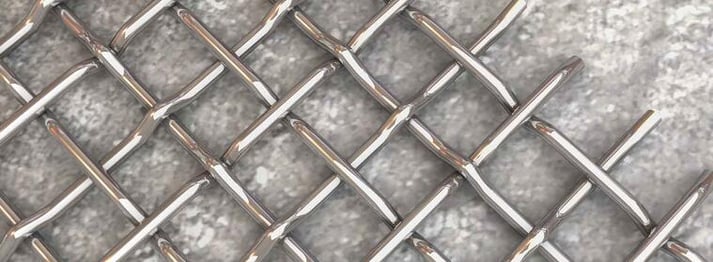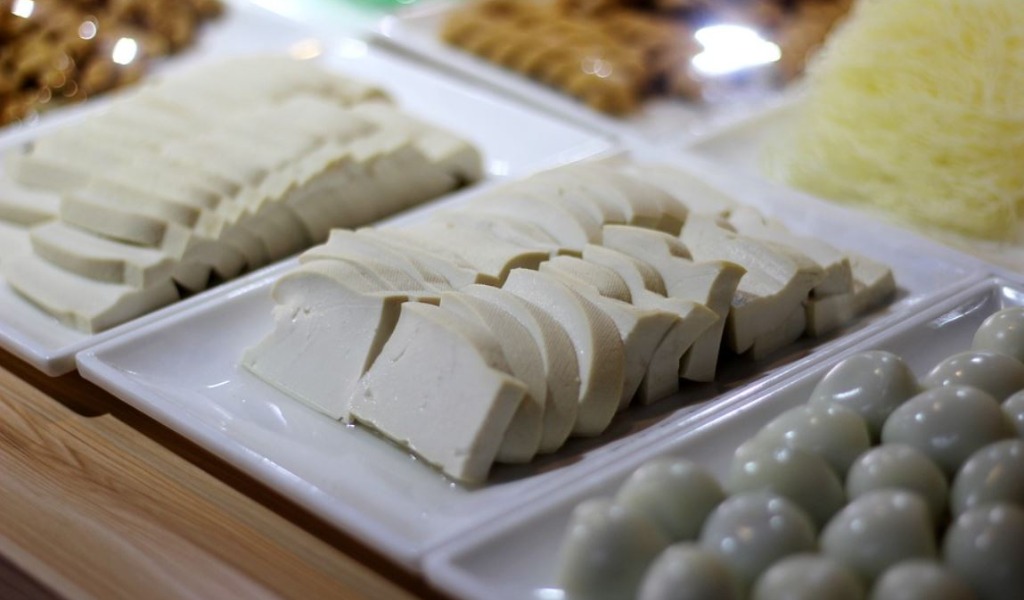How Woven Wire Mesh Benefits the Production of Tofu
When we take a look at the trends of the world, there has been a strong emphasis on living a healthy lifestyle. A significant aspect of this trend is reducing the amount of fats and oils often associated with protein sources.
In fact, some have turned to plant-based alternatives, such as tofu, to accommodate the protein requirements of their diets.
Now, in order to produce quality tofu, soybeans must undergo relatively involved processing techniques to form the squishy, absorbent cubes we use to replace meat. That said, how exactly does woven wire mesh fit into this production process?
W.S. Tyler is a woven wire mesh manufacturer that has been helping customers weave tailored solutions into their operations. We strive to learn your needs inside and out so we can help you stop worrying about your filtration capabilities so you can spend more time fine-tuning other aspects of your production line.
And with that, the following article will highlight just how woven wire mesh can be used to produce tofu efficiently. It will cover:
- What the tofu production process looks like
- How woven wire mesh is defined
- The benefits woven wire mesh delivers to the tofu production process
- The cost of woven wire mesh
How Is Tofu Made?
Tofu starts as soybeans that are soaked in water for up to a day. This enlarges them and softens them before being transferred to be crushed and ground.
During the crushing process, the softened soybeans are extruded through a filter, forming a paste comprised of soybeans, pulp, and milk.
This paste is then undergoes a centrifuge process that spins the paste at a high velocity against a filter. As a result, the solid soy meal is separated from the soy milk as the soy milk passes through the filter.
The soy milk is what will be used to create tofu.
At this point, the soy milk is placed in a specialized tank and combined with magnesium chloride and water to thicken the milk. After being stirred for 10 to 20 minutes, the soy milk becomes soy curd.
As the curd has high amounts of liquid, it is passed through a cylindrical screen. This screen work to strain the curd, removing most of the liquid contents.
Once dry, the soy curd is placed in molds lined with cheesecloth. These molds are introduced to a press that subjects the soy curd to tremendous amounts of pressure.
As the pressure is applied, any remaining liquid is removed, the curd takes on the shape of the mold, and you are left with tofu that is ready to consume.
What Is Woven Wire Mesh?
Woven wire mesh is a metallic cloth fabricated from a predetermined amount of individual wires. These wires become interwoven after undergoing a centuries-old weaving technique that resembles the weaving process used to make clothing.

Prior to being woven, parameters such as wire diameter, mesh count, alloy, mesh opening, etc., are pre-calculated, giving you complete control over mesh performance. Heat treatment, calendering, forming, welding, and other value-added services can be applied after a wire mesh specification has been woven to further enhance performance.
How Does Woven Wire Mesh Benefit the Production of Tofu?
Quality tofu products rely on accurate filtration to break down soybeans and separate the solid soy material from the liquid soy milk. As stated, there are two instances in which filtration is applied during the production of tofu.
The first instance is when the water-logged soybeans are crushed. This filtration process helps to break down the soybeans, creating a slurry of bean meat, soy milk, and pulp.
The second instance is when the soy slurry undergoes the high-velocity centrifuge process. This filtration process works to separate the solid soy material from the soy milk so the milk can be used to form tofu curd.
So, how exactly does woven wire mesh benefit these filtration processes?
The answer comes down to the fact that woven wire mesh features hundreds to thousands of pore openings, classifying it as an open product. As a result, woven wire mesh provides maximized filtration surface while delivering superior accuracy compared to other materials like perforated plate and expanded wire.
In addition to its open profile, the metallic composition of woven wire mesh allows it to be easily cleaned. In fact, woven wire mesh is typically woven from a stainless steel alloy, meaning it can be rinsed with water and whipped clean.
Its durability even allows it to be backflushed when more troublesome blinding occurs.
Having said that, it should be noted that woven wire mesh is not limited to just stainless steel alloys. There is a wide range of different alloys, each with its own beneficial qualities, that can be used.
This helps to ensure your wire mesh can withstand abrasive impacts, variating temperatures, and other concerning elements of your process.
In short, woven wire mesh offers the customization needed to provide desirable screening and filtration characteristics when producing tofu products. This high performance allows you to produce quality tofu that consumers love, building upon your reputation.
How Much Does Woven Wire Mesh Cost?
Before inquiring about a potential woven wire mesh, it is critical to understand that it can be purchased in three forms: rolls, cut-to-size pieces, and fabricated filters. The form factor in which you decide to purchase your mesh will impact the overall cost of the mesh.
Now, pricing for rolls and cut-to-size pieces is influenced by the same factors. These factors are:
- Roll Dimensions
- Roll Quantity
- Mesh specifications
- Required value-added services
- Required compliance (i.e., DFARS)
But if you are inquiring about fabricated wire mesh parts, you can expect pricing to be dictated by the following:
- The components of the part
- The profile of the part
- Mesh specifications
- Required external fabrication
- Required value-added services
- Order Quantity
- Labor
To that end, as woven wire mesh is implemented as a filter media when producing tofu products, it should be known that filter cloth weave patterns generally have more expensive price tags than square mesh patterns. This is due to the fact that square mesh weave patterns require less material, labor, and attention to detail than the more complex filter cloth weave patterns.
Square Mesh or Filter Cloth?
Tofu is a plant-based protein source growing in demand as vegan and vegetarian lifestyles also grow in popularity. It is made using soybeans that are filtered to form a paste that is again filtered to isolate the soy milk, which is used to form the soy curd that is compressed until you finally have tofu.
As stated above, woven wire mesh can fall under one of two primary categories: square mesh or filter cloth. Being able to differentiate which one will perform best when integrated into your operation will define the accuracy, efficiency, and sustainability of your tofu production process.
For over 150 years, W.S. Tyler has worked with customers just like you to develop woven wire mesh solutions that help their products meet and exceed customer expectations.
For a full breakdown of how square mesh weave patterns and filter cloth weave patterns differ, read the following article:
About Ronnie Brown
Ronnie is the Content Writer for W.S. Tyler and has four years of experience as a professional writer. He strives to expand his knowledge on all things particle analysis and woven wire mesh to leverage his exceptional writing and graphic design skills, creating a one-of-a-kind experience for customers.




